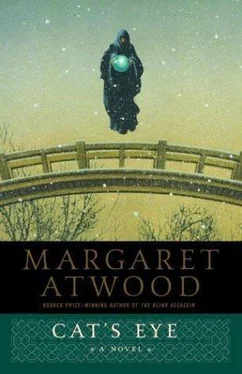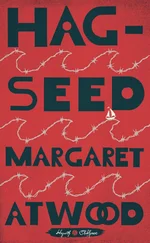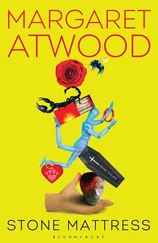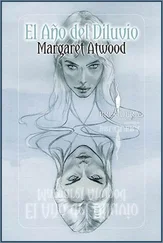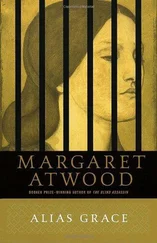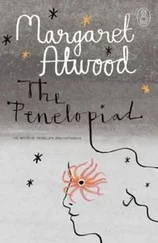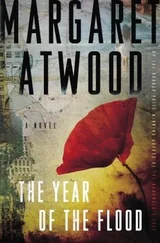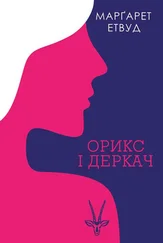Margaret Atwood - Cat's eye
Здесь есть возможность читать онлайн «Margaret Atwood - Cat's eye» весь текст электронной книги совершенно бесплатно (целиком полную версию без сокращений). В некоторых случаях можно слушать аудио, скачать через торрент в формате fb2 и присутствует краткое содержание. Жанр: Старинная литература, на английском языке. Описание произведения, (предисловие) а так же отзывы посетителей доступны на портале библиотеки ЛибКат.
- Название:Cat's eye
- Автор:
- Жанр:
- Год:неизвестен
- ISBN:нет данных
- Рейтинг книги:5 / 5. Голосов: 1
-
Избранное:Добавить в избранное
- Отзывы:
-
Ваша оценка:
- 100
- 1
- 2
- 3
- 4
- 5
Cat's eye: краткое содержание, описание и аннотация
Предлагаем к чтению аннотацию, описание, краткое содержание или предисловие (зависит от того, что написал сам автор книги «Cat's eye»). Если вы не нашли необходимую информацию о книге — напишите в комментариях, мы постараемся отыскать её.
Cat's eye — читать онлайн бесплатно полную книгу (весь текст) целиком
Ниже представлен текст книги, разбитый по страницам. Система сохранения места последней прочитанной страницы, позволяет с удобством читать онлайн бесплатно книгу «Cat's eye», без необходимости каждый раз заново искать на чём Вы остановились. Поставьте закладку, и сможете в любой момент перейти на страницу, на которой закончили чтение.
Интервал:
Закладка:
This year the play is Macbeth. Cordelia is a serving woman, and also a soldier in the final battle scene. This time she has to bring a plaid car-rug from home. She’s lucky because she also has a kilt, an old one of Perdie’s from when she went to her girls’ private school. In addition to her parts, Cordelia is the props assistant. She’s in charge of tidying up the props after each performance, setting them in order, always the same order, so that the actors can grab them backstage and run on without a moment’s thought. During the three days of rehearsal Cordelia is very excited. I can tell by the way she chain-smokes on the way home and acts bored and nonchalant, referring, every once in a while, to the real, professional actors by their first names. The younger ones make such an effort to be funny, she says. They call the Witches The Three Wired Sisters; they call Cordelia a cream-faced loon, and they threaten to put eye of newt and toe of frog into her coffee. They say that when Lady Macbeth says, “Out, damned spot,” during the mad scene, she’s referring to her dog Spot, who has poo’ed on the carpet. She says real actors will never say the name Macbeth out loud, because it’s bad luck. They call it “The Tartans” instead.
“You just said it,” I say.
“What?”
“Macbeth,” I say.
Cordelia stops snort in the middle of the sidewalk. “Oh God,” she says. “I did, didn’t I?” She pretends to laugh it off, but it bothers her.
At the end of the play Macbeth’s head gets cut off and Macduff has to bring it onto the stage. The head is a cabbage wrapped up in a white tea towel; Macduff throws it onto the stage, where it hits with an impressive, flesh-and-bone thud. Or this is what has happened in rehearsal. But the night before the first performance—there are to be three—Cordelia notices that the cabbage is going bad, it’s getting soft and squooshy and smells like sauerkraut. She replaces it with a brand-new cabbage. The play is put on in the school auditorium, where the school assemblies are, and the choir practice. Opening night is packed. Things go without much mishap, apart from the sniggers in the wrong places and the anonymous voice that says, “Go on, do it!” when Macbeth is hesitating outside Duncan‘s chamber, and the catcalls and whistles from the back of the auditorium when Lady Macbeth appears in her nightgown. I watch for Cordelia in the battle scene, and there she is, running across backstage in her kilt with a wooden sword, her car rug thrown over her shoulder. But when Macduff comes in at the end and tosses down the cabbage in the tea towel, it doesn’t hit once and lie still. It bounces, bumpity-bump, right across the stage like a rubber ball, and falls off the edge. This dampens the tragic effect, and the curtain comes down on laughter.
It’s Cordelia’s fault, for replacing the cabbage. She is mortified. “It was supposed to be rotten,” she wails backstage, where I have gone to congratulate her. “So now they tell me!” The actors have made light of it; they tell her it’s a novel effect. But although Cordelia laughs and blushes and tries to pass it off lightly, I can see she is almost in tears.
I ought to feel pity, but I do not. Instead, on the way home from school the next day, I say “Bumpity bumpity bump, plop,” and Cordelia says, “Oh, don’t.” Her voice is toneless, leaden. This is not a joke. I wonder, for an instant, how I can be so mean to my best friend. For this is what she is. Time passes and we are older, we are the oldest, we are in Grade Thirteen. We can look down on the incoming students, those who are still mere children as we were once. We can smile at them. We’re old enough to take Biology, which is taught in the Chemistry lab. For this we leave our homeroom group and meet with students from other homerooms. This is why Cordelia is my Biology lab partner, at the Chemistry lab table, which is black and has a sink. Cordelia doesn’t like Biology any more than she liked Physics, which she barely squeaked through, but she has to take something in the sciences and it’s easier, to her mind, than a number of the things she might have to take otherwise. We are given dissecting kits with scalpel-like knives that could be sharper, and trays with a coating of wax at the bottom, and a package of pins, as in sewing classes. First we have to dissect a worm. Each of us is given one of these. We look at the diagram of the inside of the worm, in the Zoology textbook: this is what we’re supposed to see once we get the worm open. The worms wriggle and twine in the wax-bottomed trays, and snout their way along the sides, trying to get out. They smell like holes in the ground.
I pin my worm at either end and make a slick vertical cut; the worm twists as they do on fishhooks. I pin the worm’s skin out to the sides. I can see its worm heart, which isn’t the shape of a heart, its central artery pumping worm blood, its digestive system, which is full or mud. “Oh,” says Cordelia. “How can you.” Cordelia is becoming mushier and mushier, I think. She is becoming a drip. I do her worm for her, when the teacher isn’t looking. Then I draw a diagram of the worm, cut open, beautifully labeled. After that comes the frog. The frog kicks and is more difficult than the worm, it looks a little too much like a person swimming. I conk the frog out with chloroform as directed and dissect it with flair, sticking in the pins. I make a drawing of the inside of the frog, with all its curlicues and bulbs, its tiny lungs, its cold-blooded amphibian heart.
Cordelia can’t do the frog either. She says she feels sick to her stomach just thinking about putting her dissecting knife through its skin. She looks at me, pale, her eyes big. The frog smell is getting to her. I do her frog for her. I’m good at this.
I memorize the statocysts of the crayfish, its gills and mouth parts. I memorize the circulatory system of the cat. The teacher, who is usually the boys’ football coach but who has recently taken a summer course in Zoology so he can teach us this, orders a dead cat for us, with its veins and arteries pumped full of blue and pink latex. He’s disappointed when it arrives, because the cat is definitely rancid, you can smell it even through the formaldehyde. So we don’t have to dissect it, we can just use the diagram in the book. But worms, frogs, and cats aren’t enough for me. I want more. I go down to the Zoology Building on Saturday afternoons to use the microscopes in the empty labs. I look at slides, planaria worms in section with their triangular heads and cross-eyes, bacteria colored with vivid dyes, hot pinks, violent purples, radiant blues. These are lit up from beneath, they’re breathtaking, like stained-glass windows. I draw them, delineating the structures with different colored pencils; though I can never get the same luminous brilliance.
Mr. Banerji, who is now Dr. Banerji, discovers what I’m doing. He brings me slides he thinks I would like to see and offers them to me shyly and eagerly, with a conspiratorial giggle, as if we are sharing a delicious, esoteric secret, or something religious. “Parasite of the tent caterpillar,” he says, depositing the slide with reverence on a clean piece of paper at my table. “Egg of the budworm.”
“Thank you,” I say, and he looks at my drawings, picking them up by the corners with his deft, bitten fingers. “Very good, very good, miss,” he says. “Soon you will take over my job.”
He has a wife now, who has come from India, and a little boy. I see them sometimes, looking in through the doorway of the lab, the child gentle and dubious, the wife anxious. She wears gold earrings and a scarf with spangles on it. Her red sari shows beneath her brown Canadian winter coat, her overshoes poking out beneath it.
Читать дальшеИнтервал:
Закладка:
Похожие книги на «Cat's eye»
Представляем Вашему вниманию похожие книги на «Cat's eye» списком для выбора. Мы отобрали схожую по названию и смыслу литературу в надежде предоставить читателям больше вариантов отыскать новые, интересные, ещё непрочитанные произведения.
Обсуждение, отзывы о книге «Cat's eye» и просто собственные мнения читателей. Оставьте ваши комментарии, напишите, что Вы думаете о произведении, его смысле или главных героях. Укажите что конкретно понравилось, а что нет, и почему Вы так считаете.
